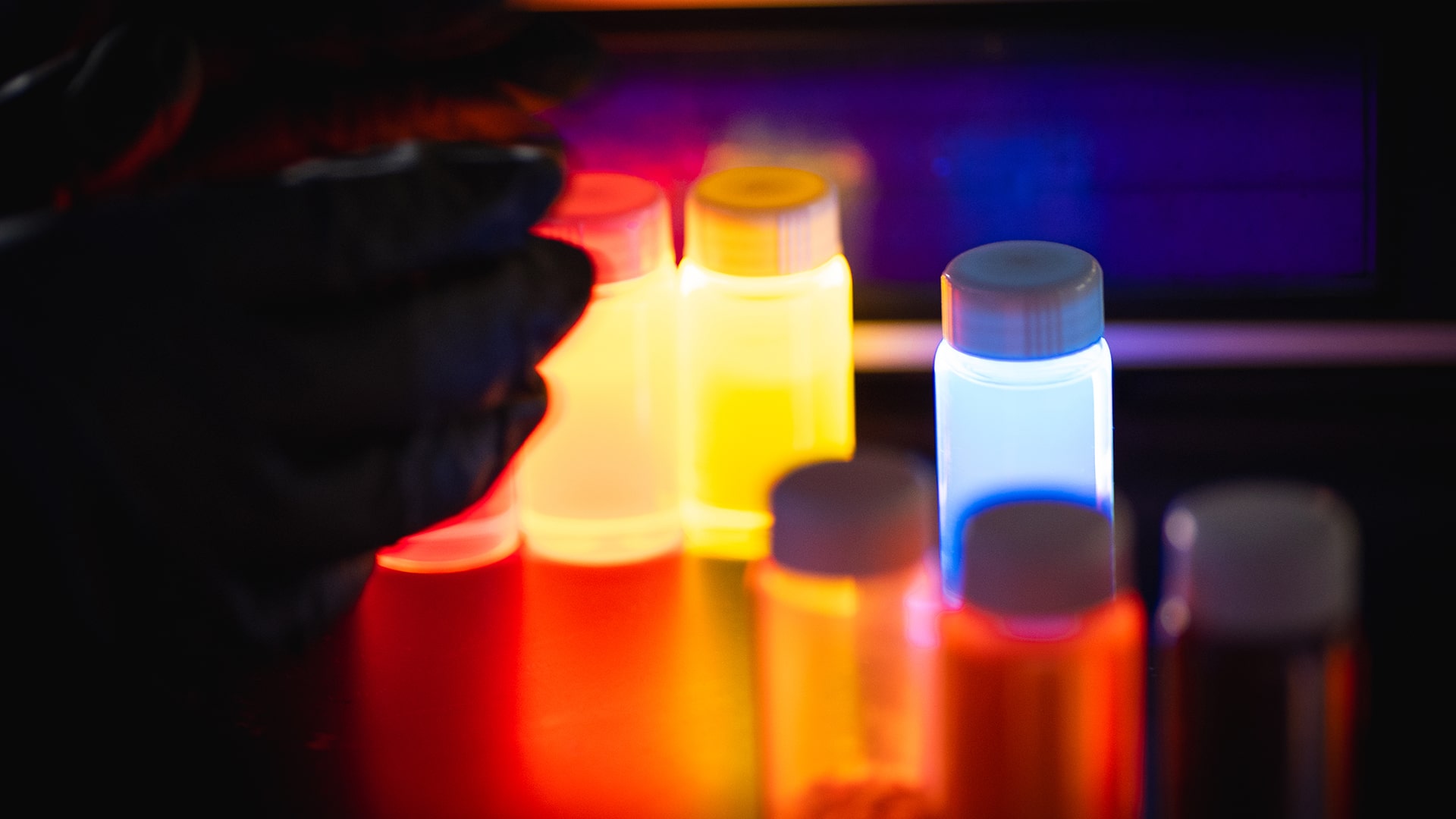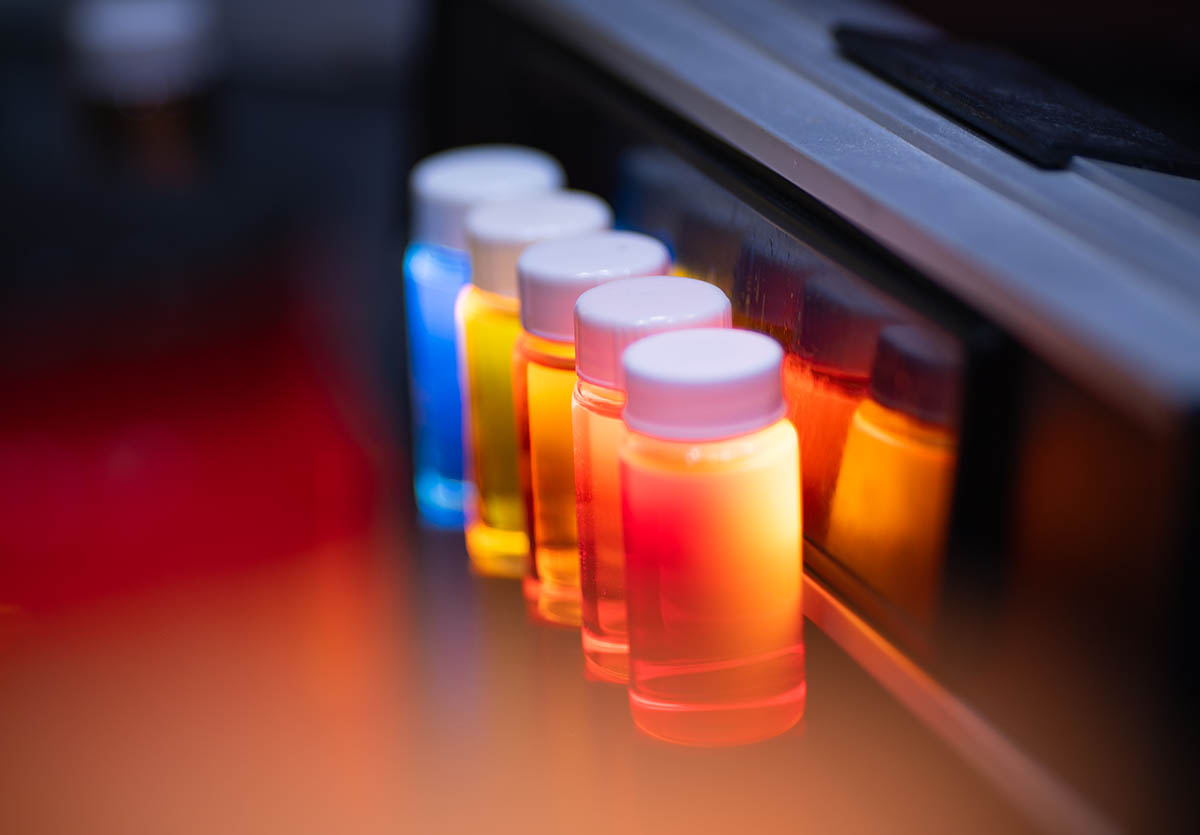More
Our Materials Set the Standard

In 2023, the Nobel Prize in Chemistry honored the pioneers of quantum dot science, a breakthrough that revolutionized how we use and harness light at the nanoscale. At UbiQD, we scale this award-winning quantum dot technology into commercial solutions that drive sustainability across agriculture, solar energy, and advanced photonics.
Why Quantum Dots?
Quantum dots are tiny semiconductors, just a few nanometers wide, that emit intensely bright, tunable light. These nanomaterials are transforming industries, from display technology and LED lighting to greenhouse films and solar panels, by optimizing how light is managed and converted.
World-Class Science, Real-World Applications
UbiQD’s core technology is built on decades of research and development. We license intellectual property from Los Alamos National Laboratory and M.I.T., including key patents co-authored by 2023 Nobel Laureate Moungi Bawendi. Our quantum dots are engineered to be non-toxic, highly efficient, and scalable for industrial use.

“The Nobel Prize is the ultimate milestone for any technology, and we are proud to be part of the story.”

Our Materials at a Glance
High-Performance Light Emission
Our quantum dots emit intense, tunable light with near-perfect efficiency, ideal for advanced lighting, solar, and agricultural applications
Safer and More Robust
Traditional QDs often contain toxic heavy metals like cadmium. UbiQD sets a new standard with safer, environmentally responsible alternatives that don't compromise on performance.
Scalable and Cost-Effective
Thanks to our patented, scalable manufacturing process, we deliver cutting-edge nanotech that’s cost-effective and ready for large-scale deployment.
Frequently Asked Questions About Our Materials
Quantum dots (QDs) are vanishingly small (nano) particles of semiconductor material that are highly effective at manipulating color and light. QDs are so tiny that one dot compared to a golf ball is about the same ratio as a golf ball to planet Earth. Each dot absorbs photons and then re-emits them as a very pure color of light (this is called photoluminescence). Crucially, the emitted color depends on the dot’s size: smaller dots emit bluer (higher-energy) light, while larger dots emit redder (lower-energy) light. Because of their high luminescence efficiency and tunability, QDs act like “artificial atoms” for light and are used in everything from displays and sensors to agriculture and solar technologies.
UbiQD’s quantum dots are based on copper, indium, zinc, and sulfur. Specifically, the core is typically copper-indium sulfide (CuInS₂, often called CIS) and the shell is zinc sulfide (ZnS). In practice this means the dots are made from common, earth-abundant elements: copper and indium in a sulfur matrix, with a zinc layer coating. This CuInS₂/ZnS core-shell structure delivers high performance (bright emission) without using cadmium. These CIS/ZnS dots are the “everyday-material” quantum dots that UbiQD holds exclusive licenses to use.
Size is critical for a quantum dot’s behavior. A smaller quantum dot has a larger bandgap, so it absorbs and emits higher-energy (bluer) light, whereas a larger dot shifts to lower-energy (redder) light. In other words, by growing the nanocrystals to different sizes, UbiQD can “dial in” the emission color anywhere from the ultraviolet up to the red or near-infrared. This size-dependent tuning also affects the absorption spectrum: smaller dots absorb bluer wavelengths, while larger dots absorb more of the red/infrared. UbiQD leverages this effect by precisely controlling dot size during synthesis to get the exact wavelength needed for each application
Traditional QDs rely on toxic heavy metals (like cadmium) to achieve bright emission. UbiQD’s quantum dots are heavy-metal-free and safer. They are made from earth-abundant elements (copper, zinc, sulfur, etc.) instead of cadmium or lead. Despite using “everyday” materials, UbiQD’s dots achieve nearly perfect brightness (emitting almost 100% of absorbed light) and remain stable in real-world conditions. UbiQD QDs are designed for high performance (very high luminescence efficiency and thermal/chemical stability) while avoiding the toxicity of traditional cadmium-based dots.
Absolutely. UbiQD’s manufacturing process allows precise tuning of each quantum dot batch. They can adjust the dot size, composition, and matrix so that the emission peak matches your requirements. UbiQD holds exclusive licenses to specific CIS-based QD formulations, giving customers unique options not available elsewhere.
The company’s foundational research is based on the discoveries honored by the 2023 Nobel Prize in Chemistry (awarded for quantum dot development). Some of UbiQD’s core patents include contributions from one of the Nobel laureates, Moungi Bawendi, and its materials use the Nobel Prize-winning synthesis methods. In short, UbiQD was founded to commercialize the very nanocrystal technology recognized by that Nobel Prize.
From Nobel Science to Scalable Solutions
We’re building on decades of quantum dot research to create real-world solutions. Want to collaborate, invest, or learn more?


